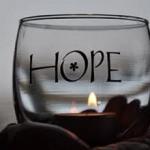A fair amount of discussion has been taking place online about the authenticity of some new manuscripts that have come to light recently. These include one that has been dated to the 7th century BCE and which mentions Jerusalem, as well as a collection of new dead sea scrolls.
And so it is time for me to revisit the Gospel of Jesus’ Wife. I had proposed a paper for SBL 2016 and had it accepted, and both before I submitted the proposal, and even after it was accepted, I genuinely wondered whether anyone would still have interest in the subject in November.
And then, as I was traveling this summer and unable to blog about it immediately, an investigative journalist published a sensational article on the likely forger and the incredible story of the intersections between the forged text and his life.
In the article, one thing that immediately grabbed my attention was this statement: “The case for forgery, at first confined to lively posts on academic blogs, took a more formal turn last summer, when New Testament Studies, a peer-reviewed journal published by the University of Cambridge, devoted an entire issue to the fragment’s detractors.” It seems to me that this “more formal turn” deserves a closer look, since the NTS articles were for the most part based on things posted online earlier, or built on such digital publications, or at the very least interacted with them. And so should the NTS issue be viewed as the moment when the discussion became more serious and rigorous, or as putting an imprimatur on the scholarly work that took place on blogs and in other online venues?
That this subject is still of interest is illustrated well by the fact that just today, the Harvard Crimson had an article on the subject. And so, if you have any interest in forgery, the Digital Humanities, or more specifically the Gospel of Jesus’ Wife, I hope you’ll come to hear my paper in San Antonio. Here are the details about the session:
S21-215
Digital Humanities in Biblical, Early Jewish, and Christian Studies; Christian Apocrypha
Joint Session With: Digital Humanities in Biblical, Early Jewish, and Christian Studies, Christian Apocrypha
11/21/2016
1:00 PM to 3:30 PM
Room: 209 (2nd Level – West) – Convention Center (CC)Theme: Christian Apocrypha and Digital Humanities
Joseph Verheyden, Katholieke Universiteit Leuven, Presiding
Brent Landau, University of Texas at Austin
What No Eye Has Seen: Using a Digital Microscope to Produce a New Transcription of Papyrus Oxyrhynchus 210, a Possible Apocryphal Gospel (30 min)
Janet Spittler, University of Virginia and Tony Burke, York University
Founding an Academic Society in the Digital Age: The North American Society for the Study of Christian Apocryphal Literature (30 min)
Jennifer Barry, University of Mary Washington
BandofAngels.org: Accessing Women’s History through the Digital Humanities (30 min)
Presenter withdrew (30 min)
James F. McGrath, Butler University
Learning from Jesus’ Wife: The Role of Online Scholarship in Creating and Exposing a Forgery (30 min)
And here is the abstract for my paper:
Learning from Jesus’ Wife: The Role of Online Scholarship in Creating and Exposing a Forgery
Forgeries are by no means a new phenomenon, and have complicated the study of the Bible – and of history more generally – since long before the modern era. New technologies offer the promise of new ways to detect forgeries, but also provide new methods and resources for forgers to produce them. In recent years, we have witnessed online discussion becoming a major element in the assessment of a number of purportedly ancient artifacts (the Gospel of Jesus’ Wife is but one well-known example). But we have also witnessed the use of blogs by non-academics to dispute the findings of mainstream archaeologists and historians, for instance about the existence of Nazareth in the time of Jesus, or even whether there was a historical Jesus at all. This paper will look at recent examples of scholarly interaction on blogs in investigating and discussing forgeries, in comparison with the investigation of such matters in the era prior to blogging and social media, to see whether the level of collaboration, the speed of progress, the reliability of conclusions drawn, and the impact on the consensus of scholars suggest that using blogs in this way represents a genuine improvement in our methods and approach.
Tony Burke and the NASSCAL blog have additional details about other Christian Apocrypha sessions at the AAR/SBL Annual Meeting.
Here is a round up of some of the other discussions around the web about the Gospel of Jesus’ Wife since this summer:
Roberta Mazza reported about the conference in Sweden about the “unbelievable past.” Liv Ingeborg Lied shared a draft of her paper from the conference.
Heather Dana Davis Parker wrote for ASOR on the broader problem of forgeries and faked antiquities. Caroline Schroeder emphasized the importance of provenance, revisited what she had written on the topic 2 years earlier, and wrote about gender and academic networks in relation to the case. In addition, NASSCAL shared her forthcoming piece from the YCAS conference where I also participated in a panel about the Gospel of Jesus’ Wife.
Owen Jarus, Christian Askeland, Roberta Mazza, Tim Pettipiece, Paul Barford, and Mark Goodacre were also among those who blogged about the article in The Atlantic. The Atlantic also published a response from Karen King. Roberta Mazza, David Meadows, and Anthony LeDonne asked what we’ve learned from this whole incident.
Earlier, Mark Goodacre had been among those who had spoken to the Boston Globe, back when the verdict was that the case “still isn’t closed.” See their subsequent follow-up, and also Goodacre’s contribution to a piece CBN produced on the topic. Many others covered the story too, such as the Weekly Standard.













